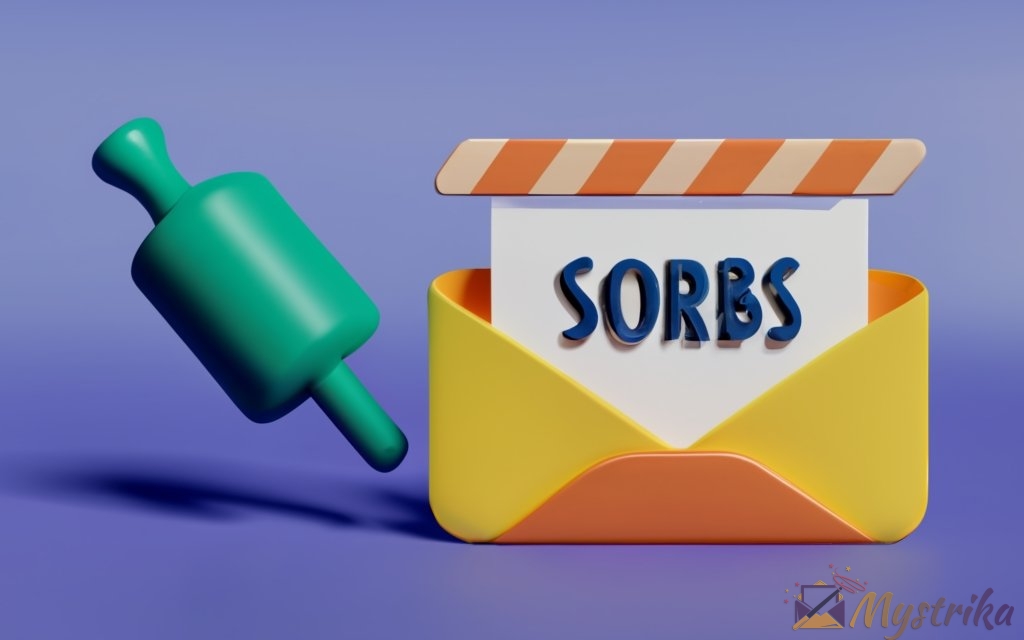Oh no! You wake up one morning, try sending emails as usual, and…nothing. Your messages keep bouncing or landing in spam folders without explanation. After some investigating, you learn your IP address has been unfairly trapped on the notorious Sorbs DUHL blacklist.
Not to worry! In this comprehensive guide, we’ll give you all the tools needed to escape this spam filter blacklist, restore your sender reputation, and get back to inboxing.
You’ll learn exactly how the Sorbs DUHL works, the risks of being listed, steps to get removed, and best practices to avoid a repeat blacklist. Let’s lift the blocking and start delivering!
What is the Sorbs DUHL Blacklist?
If you operate an email server or frequently send out email blasts, you may have come across references to the “Sorbs DUHL blacklist” before. Getting added to this obscure-sounding list can wreak havoc on your email deliverability, so it’s important to understand what it is and how it works.
In short, the Sorbs DUHL (which stands for Dynamic User and Host List) is an email blacklist that targets IP address ranges associated with dynamically assigned internet connections like cable modems and DSL. It is maintained by an anti-spam organization called SORBS (Spam and Open Relay Blocking System).
The goal of the Sorbs DUHL blacklist is to proactively block potential sources of spam and malicious emails by listing entire subnets that are deemed more likely to be compromised. This “pre-emptive blocking” approach is controversial, as it often impacts regular users running legitimate mailing servers from dynamic IP addresses.
A Closer Look at the Sorbs DUHL Blacklist
The Sorbs DUHL blacklist originated in 2001 as a small list focused mainly on dial-up IP ranges, which were prevalent at the time. As high-speed cable and DSL internet connections became more common, the Sorbs DUHL shifted to listing any network blocks using dynamic IP assignment.
Today, the list contains millions of IP addresses that Sorbs believes have a higher risk profile for sending spam or unwanted emails. Some key facts about the Sorbs DUHL blacklist:
- Administered independently by SORBS since 2003 (originally used Dynablock data)
- Focuses specifically on dynamic IP ranges rather than static IPs
- Provides no exemptions – listings never expire automatically
- Uses criteria like reverse DNS records and WHOIS data to identify targets
- Requires manual removal request even for invalid listings
The Sorbs DUHL blacklist operates by collecting data on IP addresses that send emails flagged as spam by its systems. It analyzes technical factors like reverse DNS records, generic hostnames, and IP allocation data to profile dynamic IP ranges.
Once an IP block is added to the DUHL blacklist, any emails sent from listed addresses may be blocked or filtered by major email providers that utilize the list. This can affect delivery to accounts on services like Gmail, Outlook, Yahoo and others.
The Controversy Around “Pre-emptive Blacklisting”
The Sorbs DUHL blacklist has drawn criticism from some experts for engaging in “pre-emptive blacklisting.” By targeting entire subnets and dynamic IP ranges, it often ends up blocking legitimate users rather than just confirmed spam sources.
Critics argue that this overly broad brush approach catches many “false positives” – innocent mail servers that get incorrectly labeled as spam risks. They claim the Sorbs DUHL blacklist often unfairly targets smaller ISPs and businesses using dynamic business-class connections.
Supporters counter that the Sorbs DUHL provides an effective layer of proactive protection against new and emerging spam threats. They say that requiring senders to verify and manually remove listings helps limit abuse of dynamic IPs.
The debate continues around whether the potential collateral damage to legitimate senders is worth the spam-blocking benefits of the Sorbs DUHL pre-emptive approach. But one thing is clear – if your IP address ends up on the list, it can severely hinder your email deliverability until you take steps to get removed.
Understanding the background and workings of the Sorbs DUHL blacklist is key to assessing your email reputation risks. We’ll explore more on checking your DUHL status, getting delisted, and avoiding this blacklist altogether.

How the Sorbs DUHL Blacklist Works
Now that we’ve covered the background of the Sorbs DUHL blacklist, let’s look at how this controversial system actually operates and compiles its listings.
The criteria and methods used by the Sorbs DUHL blacklist to identify and block “high risk” IP addresses shed light on why so many legitimate users often end up unfairly trapped by this overzealous spam filter.
Criteria Used for Listing IP Addresses
So how does your IP address end up on the Sorbs DUHL blacklist in the first place? There are a few key criteria and methods used:
- Reverse DNS Records: The DUHL blacklist heavily analyzes the reverse DNS records (PTR records) associated with IP blocks. Generic, dynamic-looking naming conventions like “ip-1-2-3-4.exampleisp.net” may trigger blacklisting.
- WHOIS Records: Sorbs reviews WHOIS registration data for netblocks and subnets. Ranges allocated to major consumer ISPs are often assumed to use dynamic assignment.
- Spam Honeypots: If Sorbs spam traps detect unwanted emails coming from a particular IP, it can prompt blacklisting of the encompassing subnet.
- ISP-Submitted Ranges: Some ISPs directly submit their dynamic IP ranges to the DUHL blacklist to proactively block emails.
- End-User Complaints: Third-party spam reports about particular IPs can also contribute to DUHL listings.
Essentially, the Sorbs DUHL blacklist targets entire subnets that appear to use dynamic IP assignment based on analysis of technical records, spam honeypot data, or third-party complaints. Let’s look at why dynamic IPs are singled out.
The Focus on Listing Dynamic IP Ranges
The Sorbs DUHL blacklist specifically focuses on identifying and blocking dynamic IP address ranges assigned by ISPs and hosting providers. But why does it zero in on these types of connections?
There are a few reasons dynamic IPs draw extra scrutiny:
- Constantly changing nature makes them harder to track and blacklist individually.
- Can be shared by multiple end-users, expanding potential for abuse.
- Consumer ISP ranges more likely to have novice users with insecure machines.
- Difficult to distinguish legitimate vs. malicious use for blacklist curators.
By preemptively blacklisting entire dynamic IP subnets, the Sorbs DUHL aims to overcome the challenges of pinpointing spam and malware from constantly shifting individual dynamic IPs.
This “guilty until proven innocent” approach helps explain why many users find their legitimate dynamic IP addresses unfairly blacklisted by the DUHL – the criteria focuses on the connection type rather than actual sending patterns.
Pre-Emptive Blocking: Controversial but “Effective”
The Sorbs DUHL blacklist utilizes what some experts consider a controversial “pre-emptive blocking” approach to fighting spam and malicious emails. By treating all dynamic IP users as “high risk” and blacklisting entire subnets, the DUHL essentially blocks emails first and asks questions later.
Defenders of the Sorbs DUHL argue that this proactive method provides an invaluable early protection layer against new spam threats emerging from dynamic IP space:
- Allows blocking new spam campaigns at onset before they spread.
- Prevents dynamic IPs from being exploited to send malicious emails.
- Limits potential for abusing/sharing dynamic IPs between users.
- Forces senders to verify legitimacy before delivering emails.
Critics counter that the collateral damage to regular users and small businesses is disproportionate and unfair. They argue the broad-brush technique is outmoded in an age of business-class dynamic IPs that enable legitimate commercial email use.
Regardless of where you stand on the pre-emptive approach, understanding the rationale behind the Sorbs DUHL criteria provides insight into avoiding or removing listings. We’ll cover specific steps to get delisted later on.
In short, the Sorbs DUHL blacklist targets dynamic IPs aggressively to maximize spam blocking, which can have unjust consequences for valid senders using modern dynamic connections.

Checking If You’re on the Sorbs DUHL Blacklist
If you suspect deliverability issues from the Sorbs DUHL blacklist may be impacting your emails, the first step is to confirm whether your IP address or domain is actually listed or not.
Luckily, Sorbs provides an online lookup tool right on its website to easily check your current DUHL status. You can also use blacklist checking tools from email deliverability services like Mystrika to validate against the Sorbs DUHL and other major blocklists.
Let’s walk through the process of looking up your IP and domain on the Sorbs DUHL blacklist using the options available.
Using the Sorbs Website’s Lookup Tool
Here are the steps to check your Sorbs DUHL blacklist status using the search directly on sorbs.net:
- On the Lookup page, enter your full IP address (like 192.168.1.101) in the search bar.
- Complete the CAPTCHA anti-abuse challenge.
- Click “Submit” to run the lookup check.
Once submitted, you will see a message indicating if your IP/domain is “listed” on the DUHL blacklist or “not listed currently.”
If your IP is listed, expand the details to see the reason provided for the blacklist entry. Make note of this for your removal request later.
Interpreting the Sorbs DUHL Lookup Results
When searching for your IP or domain on the Sorbs lookup, here is how to interpret the possible results:
- “Not listed currently” = All clear! Your IP/domain is not blocked by the DUHL blacklist.
- “Listed” + Details = Trouble. Your IP/domain is on the DUHL blacklist along with the reason provided.
Some other key notes about Sorbs DUHL lookup results:
- DUHL listings do not expire automatically, so a listing won’t just “fall off” after some time.
- Being listed only indicates blocked status on DUHL itself. You may still want to check other major blacklist statuses.
- No listing confirmation doesn’t guarantee deliverability if blocked elsewhere.
Checking directly on the Sorbs website provides the most authoritative result to know if you have an active DUHL listing or not. If listed, you can now move to getting the entry removed.
Using Third-Party Blacklist Checks
In addition to the Sorbs lookup, many email deliverability platforms like Mystrika provide blacklist checking tools that validate your standing against DUHL plus other major blocklists like Spamhaus, Opswat, and more.
These aggregated blacklist checks are useful to get a quick snapshot of your overall blocking status beyond just Sorbs DUHL. They can identify other blocklist issues that may be impacting your email reputation.
To check via third-party tools:
- Visit site and enter your IP address and/or domain
- Results will show DUHL status plus other lists
- Helps reveal larger deliverability picture
Combining the Sorbs website lookup with multi-list checking tools gives you a detailed view of blacklist problems. Focus first on getting off DUHL, then tackle other blocklists that may be flagged.
Confirming your Sorbs DUHL standing is the vital first step towards removing listings and recovering your email deliverability.

Interpreting the Sorbs DUHL Blacklist Lookup Results
When you perform a lookup on the Sorbs website or via a third-party multi-blacklist checking tool, you’ll get back a result indicating your listing status along with some additional details.
It’s important to properly interpret these Sorbs DUHL blacklist lookup results so you understand the implications and next steps. Let’s explore how to decipher the feedback to determine your actual blocking status and impact.
Understanding the Meaning of DUHL Listing Status
As covered earlier, the Sorbs DUHL lookup will return one of two basic responses about your IP address or domain:
- “Not listed currently” = Not blacklisted by DUHL
- “Listed” + Details = On the DUHL blacklist
Seems straightforward, but it’s vital to grasp the nuances of what these statuses actually mean:
- “Not listed” does not guarantee inbox delivery everywhere. You may still be blocked by other blacklist filters.
- “Listed” does not mean you’re a spammer. False positives frequently trap legitimate senders on DUHL.
- Listings only indicate DUHL block status specifically. You should still check other major blacklists.
In essence, a “not listed” lookup result only confirms your IP/domain is not currently blocked by the Sorbs DUHL itself. It does not verify overall email deliverability or reputation.
And an active “listed” status proves your presence on the DUHL blacklist, but should not be interpreted as a definitive indictment of you as a spammer. Legitimate reasons like a compromised device could still be responsible for the listing.
Understanding these subtleties will help avoid incorrect assumptions or conclusions based on your Sorbs DUHL lookup results.
Digging Into the Details of DUHL Listing Results
When your lookup returns a “listed” status on the Sorbs website, expanding the details will provide the specific reason or rationale behind you being added to the DUHL blacklist.
Some examples of explanations you may see:
- “ISP dynamic pool range”
- “DHCP subnet with residential users”
- “Unverified dynamic address space”
- “Spam received from IP address”
Analyzing these details can give insight into why you may have been unfairly flagged based on dynamic IP criteria rather than actual sending patterns. It also arms you with helpful context for getting removed.
However, other times the reason may indicate possible compromise or spam activity from your IP. Understanding the reason can help you resolve any underlying issue before attempting delisting.
Scrutinizing the DUHL listing details provides clarity into how and why your IP ended up on the blacklist in the first place.
Checking Other Major Blacklists Too
While a Sorbs DUHL lookup confirms your status just on that specific blacklist, it’s also advisable to check other major email blocklists to get a complete picture.
Spamhaus, Barracuda, Spamcop, and other filters may also be blocking your emails independently from Sorbs. Multi-blacklist checking tools like Mystrika’s Blacklist Check make it easy to validate against DUHL plus many other databases at once.
Checking additional blacklists helps you identify any supplementary reputation issues that require remediation beyond just getting off of Sorbs DUHL. Comprehensive blacklist monitoring provides greater visibility into all potential factors harming your deliverability.
With the right context and perspective, your Sorbs DUHL lookup results provide actionable insight into improving your sending reputation. Targeted blacklist checks paint a fuller picture of your overall standing.
Carefully interpreting these lookup results will enable you to strategically remove DUHL listings while also addressing any wider email deliverability challenges.

Risks of Being on the Sorbs DUHL Blacklist
Now that you know how to check your standing with the Sorbs DUHL blacklist, let’s discuss the potential consequences of being labeled as a dynamic spamming range.
Unfortunately, the risks of finding yourself unfairly trapped on this overzealous blacklist are not just hypothetical – blocking by DUHL can significantly disrupt your legitimate email activity.
Understanding these tangible impacts can help motivate you to take action for getting removed from the Sorbs DUHL blacklist if needed. Here are the main types of damage that listings can inflict.
Emails Blocked or Marked as Spam
The most direct risk of landing on the Sorbs DUHL blacklist is having your outgoing emails blocked or filtered to spam at major receivers like Gmail, Outlook, Yahoo and others.
When your IP range appears on the DUHL blacklist, receiving servers refer to this data to classify messages from your addresses as potential threats – diverting them to spam or blocking delivery altogether.
Exact impacts depend on how strictly the receiving domain configures its spam filters. More aggressive settings may result in auto-delete on arrival rather than just spam folder routing.
This email blocking prevents your messages from reaching inboxes. Additionally, mass-blocking trains recipients to disregard your emails as “spam” even if you get delisted later.
Sending Reputation Gets Branded as Unsafe
Beyond direct blocking, inclusion on the notorious Sorbs DUHL blacklist also harms your overall sender reputation by labeling your IP addresses as likely sources of spam or malware.
This “spammer” stigma means other receivers are more likely to view messages from your infrastructure as risky and filter more aggressively even if they don’t specifically utilize DUHL.
Your domain and even linked branding can get dogged by negative spammer connotations that are difficult to shake once established. Ongoing blocking only strengthens these high-risk perceptions.
Undoing the spammer reputation brand from DUHL blacklisting requires diligent effort to re-establish trust and safety once delisted. The stigma does not disappear automatically.
Widespread Email Delivery Issues
Between explicit email blocks by domains using the DUHL blacklist and indirect reputation impacts that prompt higher filtering elsewhere, finding yourself unfairly listed can create delivery problems across the board.
You are likely to experience:
- More messages sent to spam folders in general
- Higher bounce rates as emails get rejected
- Slower inboxing times even for emails that get through
These widespread deliverability issues result from both specific DUHL blocks and your overall sender reputation taking a hit in the eyes of receiving domains.
Battling back from a Sorbs DUHL listing requires systematically recovering your sender standing across the email ecosystem, not just with Sorbs itself.
Collateral Impacts on Business Metrics
Ultimately, the downstream effects of reduced email deliverability will manifest in your key business metrics including:
- Lower email open and response rates
- Declines in conversion from email campaigns
- Loss of expected transactional email reliability
Any business or marketing activity dependent on reaching inboxes will suffer from degraded performance, engagement, and revenue.
These metrics impacts emphasize the importance of avoiding or quickly removing Sorbs DUHL listings before collateral damage spreads.
In short, inclusion on the Sorbs DUHL blacklist can rapidly spiral, creating widespread deliverability destruction and business disruption. Understanding these risks adds urgency to remediating your status.

Getting Removed from the Sorbs DUHL Blacklist
If you confirm that your IP address or domain is unfortunately listed on the Sorbs DUHL blacklist, your next vital step is getting removed to restore your email delivery.
The delisting process requires investigating the reason for your block listing, resolving any underlying issues, and formally requesting removal from SORBS.
Let’s break down the key steps to successfully get off the Sorbs DUHL blacklist:
Overview of the Sorbs DUHL Delisting Process
At a high level, the main actions needed to be removed from the Sorbs DUHL blacklist include:
- Identifying the root cause of the listing and fixing affected systems. This may involve malware removal, securing devices, configuring mail servers properly etc.
- Submitting a formal delisting request to SORBS along with details of the remediation performed.
- Allowing time for SORBS to review and process the request – this may take a few days to a week typically.
- Following up if removal seems to be taking longer than expected.
- Continuing to monitor systems and IP reputation to avoid repeat listings.
Understanding the overall workflow will help focus your efforts towards each step effectively. Now let’s look at each component more closely.
Identify and Resolve What Triggered the DUHL Listing
The first priority is investigating why your IP address or domain ended up on the Sorbs DUHL blacklist in the first place, and addressing the root cause.
If the reason Sorbs provides suggests possible infection or compromise, malware scans and removal tools are a good starting point.
If the listing seems related to running your own mail server improperly, ensure your configurations adhere to best practices for authentication, security, and volume limits.
Isolating and fixing what led to the DUHL listing is vital groundwork before attempting delisting.
Secure Systems and Carefully Monitor Configurations
As part of remediation, undertake a comprehensive audit to identify and resolve any vulnerabilities that may have contributed to spam or illicit use.
Shore up the security of your connected systems, websites, DNS infrastructure and any other components linked to the affected IP addresses or domain. Tighten access controls and patches.
Moving forward, closely monitor your systems and configurations for any changes or odd activity that could lead to repeat issues down the line. Stay vigilant.
Buttoning up security helps demonstrate you’ve addressed the problem and prevents any recurrence.
Provide SORBS Details of Performed Remediation
With your systems cleaned up and secured, the next step is providing SORBS with visibility into the actions you’ve taken to resolve the problems initially triggering the DUHL listing.
As part of your delisting request, share technical details on malware removal, security steps, mail server hardening, or any other relevant remediation.
The more evidence you can provide on fixes implemented, the higher your chances of convincing SORBS to remove the listing. Transparency is key.
This documentation helps prove to SORBS that you’ve taken ownership of the issue and taken appropriate corrective measures.
Allow Time for SORBS Review and Delisting Response
Once you submit your removal request to SORBS with documentation, you’ll need to allow some time for their review and response.
The delisting process is not instant, but typically takes anywhere from a few days to a week in most cases.
Follow up if you haven’t heard back after a week to 10 days. Periodically check your Sorbs DUHL listing status to see if you’ve been removed.
Have patience as SORBS completes their assessment of your request and implements the changes to delist you from the DUHL blacklist if deemed valid.
With focus and perseverance, you can regain your good standing by following this removal process. Don’t hesitate to reach out for assistance if you have any trouble getting a resolution from SORBS.

Tips for Successful Sorbs DUHL Delisting
Getting removed from the Sorbs DUHL blacklist involves more than just submitting a basic delisting request. To improve your chances of success, keep these tips in mind:
Evidence of Issue Resolution May Be Needed
As outlined in the SORBS published process for requesting removal from the DUHL blacklist, you may need to provide evidence that the root cause of the listing has been addressed.
This typically would involve details of actions taken, such as:
- Anti-malware scan logs showing infection removal
- Documentation of mail server reconfigurations
- Excerpts of updated security policies and controls
Having documentation ready to share will help demonstrate to SORBS reviewers that you have taken steps to resolve any problems and prevent recurrence.
The more technical evidence you can furnish, the better your chances of convincing SORBS that delisting your IP range is justified and low risk.
Prevent Repeat Listings by Continuously Monitoring Systems
Simply getting removed from the Sorbs DUHL blacklist once does not guarantee you will stay off. If the root issues were not comprehensively fixed, listings can easily happen again.
Set up ongoing monitoring and alerts to detect any suspicious activity across email servers, websites, user endpoints and other systems tied to your IP addresses.
Periodically double check Sorbs for new listings and also monitor your IP reputation through tools like Mystrika.
Proactively keeping tight controls will avert repeats of the problems that originally led to DUHL blacklisting.
Staying off requires constant reputation vigilance even after an initial delisting. Don’t let your guard down.
Work with Your ISP for Quicker Removal
For fastest delisting, experts often recommend having your internet service provider submit the removal request to SORBS on your behalf rather than doing it yourself as an end user.
Since Sorbs views ISPs as the authoritative owners of dynamic IP address ranges, they may be more receptive to removal requests coming directly from the provider.
Check if your ISP can assist with interfacing with SORBS to request re-evaluation of your IP range’s DUHL listing. The lift may be less heavy.
Leveraging your ISP’s closer relationship with SORBS, when possible, can help accelerate the delisting process.
Don’t Give Up If Delisting Is Denied Initially
Sometimes SORBS may reject or require further action on an initial delisting request before honoring removal.
If your first attempt fails, thoroughly review any feedback from SORBS then redouble your remediation and security efforts as needed. Gather more extensive documentation and re-submit the request.
Persisting with enhanced evidence of fixes may still convince SORBS on subsequent tries. Don’t immediately despair if your first delisting request does not succeed.
With a methodical and exhaustive approach, you can ultimately earn back SORBS’s trust.
By incorporating these tips, you can maximize your chances of successfully removing your IP addresses from the Sorbs DUHL blacklist and resuming normal email operations.

Best Practices to Avoid Sorbs DUHL Blacklisting
While getting removed from the Sorbs DUHL blacklist is vital if you find yourself unfairly trapped, the best course is avoiding ending up on this blacklist in the first place.
Let’s explore some email best practices to help minimize your risk of being labeled as a dynamic spamming range and preemptively blocked:
Verify All Email Addresses Before Sending
One of the surest ways to trigger DUHL blacklisting is attempting to send mail to a large volume of invalid, inactive, or improperly formatted addresses.
Before importing any lists or blasting out emails, run your contacts through an address verification process to flag and remove any that are risky or undeliverable.
Scrubbing your lists of bad addresses ensures you avoid potentially spam-like sending patterns by only targeting legitimate and active inboxes.
Email verification is well worth the effort to reduce chances of seeming like a spammer to SORBS.
Carefully Monitor Your Sending Volume and Frequency
Mass blasting huge volumes of emails is one of the fastest ways to get profiled as a likely spammer by systems like SORBS DUHL.
Even if addresses are valid, sending thousands of similar messages in a short period can appear suspicious.
Closely monitor your outbound email volumes and throttle as needed to avoid hitting excessive levels. Gradually ramp up rather than bombarding all at once.
Also vary your content and stagger dispatch over days or weeks rather than triggering volume spikes.
Maintaining modest, consistent volumes helps avoid overly aggressive activity.
Avoid Spam Trigger Words in Email Content
In addition to volume, the actual contents of your messages can also raise red flags if they seem salesy, promotional, or use common spam phrases.
Avoid trigger words like “free,” “act now,” “limited time,” and other cliches typically associated with spam campaigns in your email subject lines and content.
Also ensure your messages demonstrate value, relevance and good writing – don’t just blast ads or offers without context.
Spammy content can undermine even modest sending volumes and highlight you as a risk.
Properly Warm Up Any New IP Addresses
If you begin sending from a fresh, never-used IP address without gradually ramping up volumes first, this unnatural activity can trigger DUHL preemptive blocking.
Be sure to properly warm up new IP addresses by slowly increasing your send volumes over a period of weeks as you build your IP’s reputation.
Tools like Mystrika facilitate structured IP warmup plans and associated address hygiene to keep your ramp-up safe.
A measured warmup helps new IPs avoid overly aggressive initial activity that may seem “spammy.”
Regularly Check Your IP and Domain Reputations
Being proactive with ongoing reputation monitoring allows you to detect any issues promptly rather than being caught unaware once blacklisted.
Regularly check your IP and domain reputations using multi-blacklist tools to catch any emerging listings early.
You can also monitor your sender score and other mailbox provider-level feedback.
Proactive reputation checks enable early intervention to avoid major blacklists like DUHL.
Developing disciplined email habits will help maintain your sender credibility and avoid the problematic behaviors that land otherwise legitimate senders in the problematic Sorbs DUHL blacklist.
While not a guarantee, responsible sending practices can help you preserve inbox access for your messages and avoid being unfairly profiled as a spammer.
Key Takeaways on the Sorbs DUHL Blacklist
Now that we’ve covered the purpose, risks, removal processes, and prevention best practices relating to the Sorbs DUHL blacklist, let’s recap some key lessons:
The Sorbs DUHL Blacklist Targets Dynamic IP Ranges
- Maintained by SORBS to block potential spam from dynamic space
- Focuses on entire subnets rather than individual IPs
- Originated blocking dial-up ranges but expanded to all residential ISP ranges
- Pre-emptively lists “high risk” IP blocks without hard evidence
Getting Removed Requires Remediation and Delisting Request
- Identify and fix root cause like infections or mail server issues
- Secure systems and monitor to prevent recurrence
- Submit detailed removal request to SORBS with evidence of fixes
- May take days or weeks depending on review depth
Careful Email Practices Help Avoid Listings
- Confirm email addresses before sending to avoid spam indications
- Gradually warm up new IP addresses instead of blasting
- Monitor volume and frequency to avoid spikes
- Avoid spam-like content such as promotional language
- Regularly check IP and domain reputations
Don’t Panic If You End Up Listed
- Listing does not necessarily indicate you are a spammer
- Focus on removal process and continue emailing normally
- Consider leveraging a warmup service like Mystrika to maintain your sender reputation
With the right context on the Sorbs DUHL blacklist, you can now make smarter decisions regarding your email infrastructure and practices to avoid unfair blacklisting, while efficiently regaining your sending freedom if blocked.
Avoiding and removing DUHL listings may seem intimidating initially, but is quite achievable with the proper insight and game plan.
Hopefully this guide provides the knowledge needed to keep your messages landing in inboxes rather than being derailed by overzealous blocking.
Frequently Asked Questions
What is the Sorbs DUHL blacklist?
The Sorbs DUHL (Dynamic User and Host List) is an email blacklist maintained by the anti-spam group SORBS. It lists IP address ranges believed to be associated with dynamic internet connections like consumer broadband. The goal is to preemptively block potential spam sources.
How does Sorbs DUHL work?
SORBS profiles and lists entire IP subnets that appear to use dynamic assignment. It analyzes technical factors like reverse DNS, WHOIS data, and spam trap patterns. Once listed, emails from affected ranges may be blocked or filtered.
Why was I blacklisted by Sorbs DUHL?
You may have been unfairly listed if your IP range seems residential or dynamic based on technical factors, even if you aren’t actually sending spam. False positives are common. Compromise or spam from others on shared IPs can also cause blacklisting.
How can I check if I’m on the Sorbs DUHL blacklist?
Use the lookup tool on the Sorbs website to search by your IP address or domain. You can also use multi-blacklist checkers that include DUHL validation. A “listed” result means you are currently blocked.
How do I get removed from the Sorbs DUHL blacklist?
Submit a removal request through the Sorbs website with details of steps taken to resolve any issues. Provide supporting documentation. Allow time for review and processing. Work with your ISP if possible.
How can I avoid being blacklisted by Sorbs DUHL?
Best practices like address verification, gradual IP warmup, volume throttling, avoiding spammy content, and regular reputation monitoring can help minimize your risk of being preemptively listed.
What are the risks of being on the Sorbs DUHL blacklist?
You may experience widespread blocks, filtering to spam, reputation damage, lower deliverability and engagement rates, and other disruptive impacts that hurt email performance.

